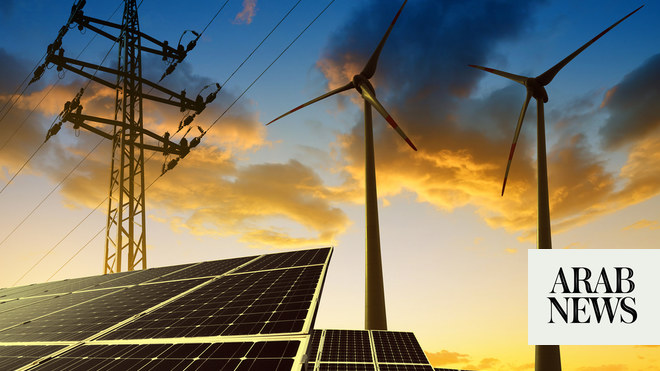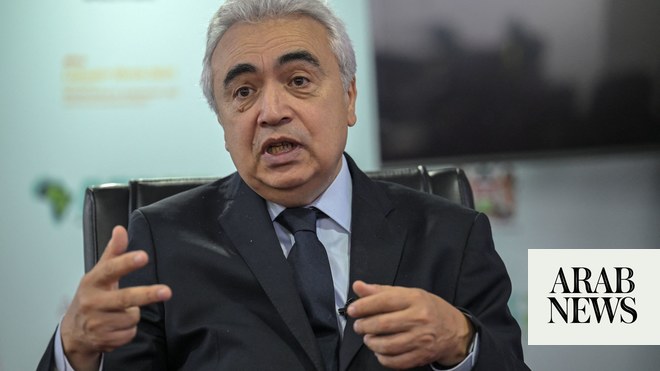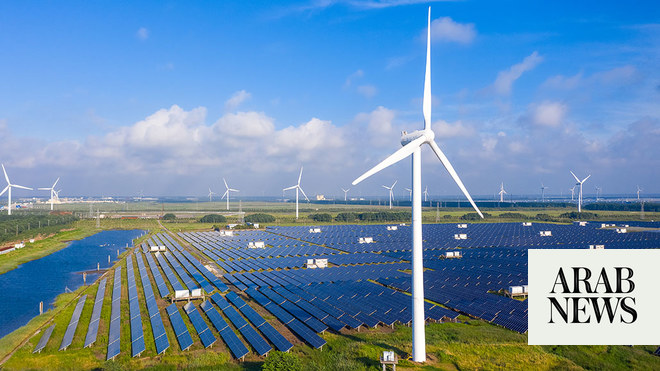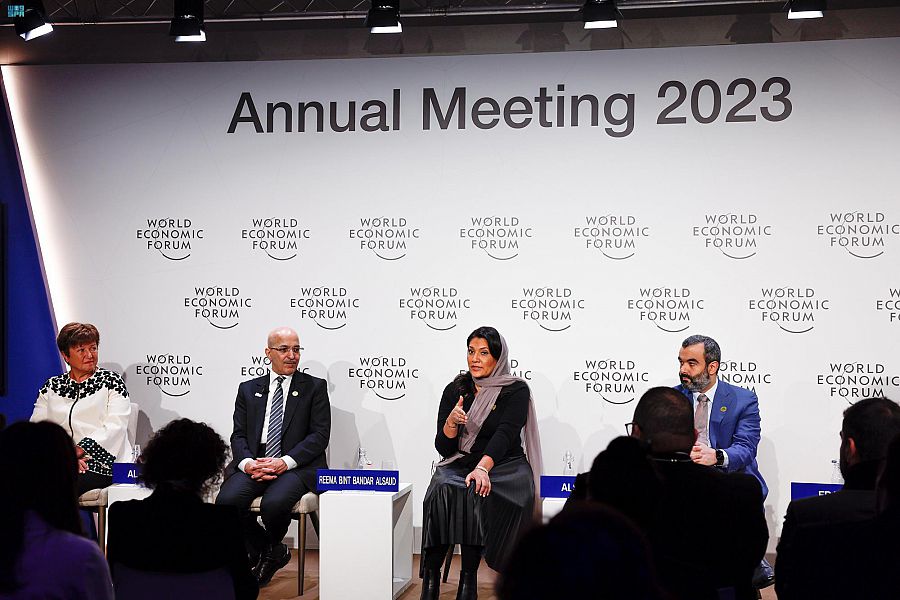
RIYADH: Booming investments in clean energy technology are strengthening the global economy by creating new industrial and employment opportunities, a report has outlined.
According to the International Energy Agency, global investment in the manufacturing of five key clean energy technologies – solar photovoltaic, wind, batteries, electrolyzers, and heat pumps – surged by 70 percent year-on-year in 2023 to $200 billion.
The IEA added that investments in clean technology manufacturing are becoming increasingly significant and are beginning to register in broader macroeconomic data.
According to the report, such investments in 2023 accounted for around 0.7 percent of worldwide investment across all sectors of the economy.
“In growth terms, the contribution is even starker — in 2023, clean technology manufacturing alone accounted for around 4 percent of global GDP (gross domestic product) growth and nearly 10 percent of global investment growth,” said the IEA.
Solar PV meets 2030 targets
The analysis revealed that investments in solar PV manufacturing more than doubled last year to $80 billion, while funding in battery production rose by around 60 percent to $100 billion.
Due to the surge in investments, solar PV module manufacturing capacity today is already in line with what is needed in 2030 based on the IEA’s net zero emissions scenario.
Similarly, for battery cells, if announced projects are included, manufacturing capacity is 90 percent of the way toward meeting net zero demand by the end of this decade, the report highlighted.
“Record output from solar PV and battery plants is propelling clean energy transitions — and the strong investment pipeline in new facilities and factory expansions is set to add further momentum in the years ahead,” said IEA Executive Director Fatih Birol.
He added: ‘While greater investment is still needed for some technologies — and clean energy manufacturing could be spread more widely around the globe — the direction of travel is clear.
“Policymakers have a huge opportunity to design industrial strategies with clean energy transitions at their core.”
The IEA also stated that around 40 percent of investments in clean energy manufacturing in 2023 were in facilities that are due to come online in 2024. For batteries, this share rises to 70 percent.
Battery manufacturing grows
Battery manufacturing also had a record year in 2023, with production totaling more than 800 gigawatt-hours, representing a rise of 45 percent from 2022.
The report highlighted that battery capacity additions also surged, with almost 780 GWh of cell manufacturing capacity added in 2023, around a quarter more than the previous year.
“Globally, battery manufacturing capacity could exceed 9 terawatt-hours by 2030 if all announcements are realized. Battery manufacturing deployment needs in 2030,” added the IEA report.
Similarly, new manufacturing capacity for wind and electrolyzers also grew faster in 2023.
According to the agency, the existing capacity for wind could deliver nearly 50 percent of the needs in 2030, while announced projects could meet a further 12 percent.
Meanwhile, capacity additions for heat pump manufacturing slowed due to stagnation in the majority of leading markets. The report added that the existing capacity could deliver only around one-third of the needs required in 2030.
China dominates clean energy
Clean energy manufacturing is still dominated by a few regions, with China home to 80 percent of the global solar PV module production capacity.
The report highlighted that the manufacturing of battery cells could become less geographically concentrated by the end of this decade if all announced projects are materialized.
After conducting plant-level assessments of more than 750 facilities, the IEA found that China remains the lowest-cost producer of all clean energy technologies.
“Battery, wind and solar PV manufacturing facilities are typically 20 percent to 30 percent more expensive to build in India than in China, and 70 percent to 130 percent more in the US and Europe,” the IEA said.
It added: “However, the vast majority of total production costs for these technologies; 70 percent to 98 percent, is estimated to come from operational costs, which include inputs such as energy, labor and materials — implying that production cost gaps seen today are not immutable and can be influenced by policy.”
Apart from China, the US, and the EU, other countries that heavily invested in clean energy technologies in recent years were India, Japan, and South Korea.
The report also highlighted that similar investments in Africa, Central America, and South America were negligible.
Multiple factors shape investments
The IEA revealed that cost is not the only factor that draws investments in the clean energy technology sector.
According to the think tank, several other factors, including the size of the domestic market, availability of skilled workers, and infrastructure readiness, are other crucial elements that shape the decisions of firms to invest in the sector.
“Policy interventions can therefore raise the attractiveness of investing in a given region without directly subsidizing the costs of manufacturing,” said the IEA.
It added: “Training and certification schemes for workers, compressing project lead times while maintaining environmental standards, enlarging domestic markets and reducing uncertainty with robust, stable climate policies are some key ‘low regret’ measures that can increase incentives to invest, irrespective of the role of direct incentives in industrial strategies.”
The report also underscored the vitality of research and development to increase the growth of clean energy manufacturing globally.
“While private-sector R&D can be stimulated by policies that promote manufacturing investment and experience, direct innovation support is also needed,” said the IEA.
The agency also noted that government initiatives, including R&D grants or loans, project finance, support for rapid prototyping, and promoting startups, will accelerate advancements in clean energy manufacturing.












